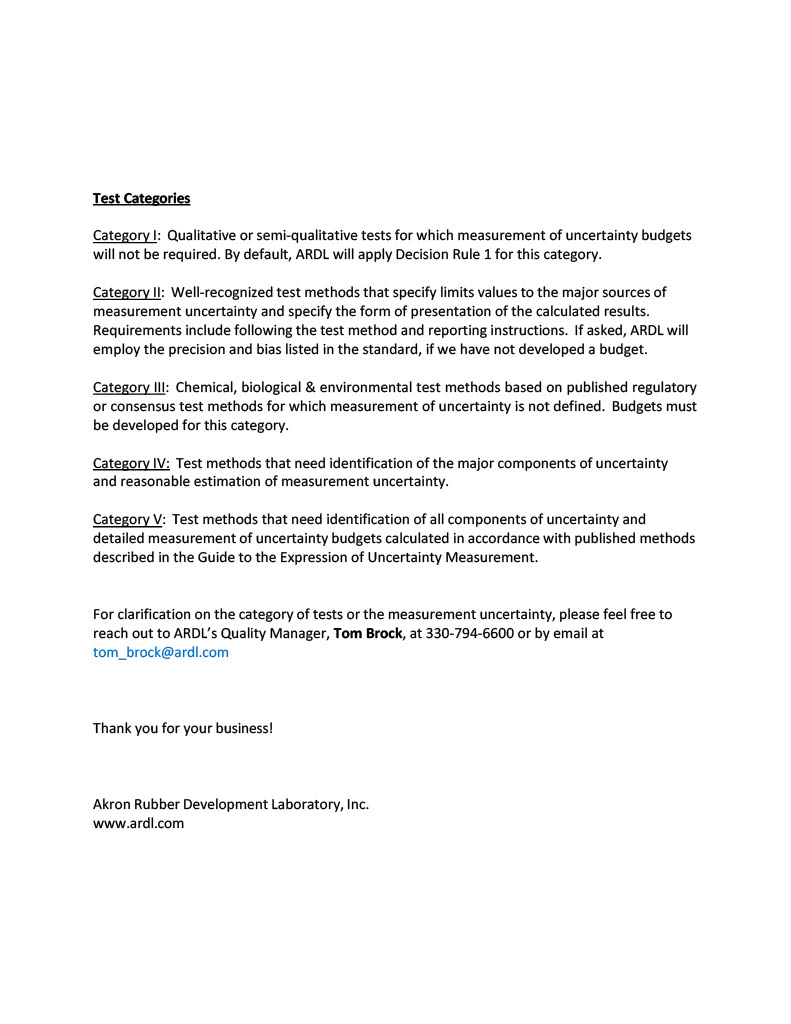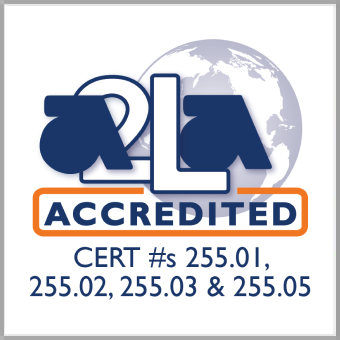Uncertain About Uncertainty? – Don’t Be!
The latest revision of ISO 17025 requires ARDL to group the test standards covered by our Scope of Accreditation into five categories based on the nature of testing. Additionally, for test categories II, III, IV and V we are required to ask customers to choose a “Decision Rule” regarding the measurement uncertainty associated with that testing. The Decision Rules are listed below and the definitions of the five test categories are listed at the end of this notice.
The Decision Rules are simple:
Rule 1. This is the way test results have traditionally been reported by ARDL. If ARDL runs a test for you that has pass/fail requirements, ARDL will report the values observed and then state “Pass” or “Fail”, based on those values only. If ARDL runs a test for you that does not have pass/fail requirements, ARDL will report only the values observed. By default, ARDL will apply this rule to all Category I tests and those tests which are not on ARDL’s Scope of Accreditation.
Rule 2. This rule takes into account the calculated measurement uncertainty of test results generated. Every test and piece of test equipment has an inherent amount of measurement uncertainty associated with it. Rule 2 establishes “Guard Bands”, where the measurement uncertainty value is added to the Minimum Passing requirement and is subtracted from the Maximum Passing requirement. The Pass/Fail requirements thus become tighter and customers may be more “Certain” of their Pass/Fail result. For example, a test method to determine the weight of an object may have a measurement uncertainty of +/- 3.0 grams. Let’s say the measured result of this test method is 13.0 grams. If a test specification noted values between 5 grams and 15 grams as “Passing” results, Guard Banding would narrow this range to between 8 grams and 12 grams. Applying Rule 2 to this scenario, a reading of 13.0 grams would be reported as a “Fail”.
Rule 3. This rule also takes into account measurement uncertainty but does not set up guard bands. Rule 3 may be used when values are reported, but there is no Pass/Fail requirement called out in the test specification. Rule 3 simply states that the measurement uncertainty is reported to the customer, along with the testing result generated, and the customer decides if the results are suitable for their purposes.
Test Categories
Category I: Qualitative or semi-qualitative tests for which measurement of uncertainty budgets will not be required. By default, ARDL will apply Decision Rule 1 for this category.
Category II: Well-recognized test methods that specify limits values to the major sources of measurement uncertainty and specify the form of presentation of the calculated results. Requirements include following the test method and reporting instructions. If asked, ARDL will employ the precision and bias listed in the standard, if we have not developed a budget.
Category III: Chemical, biological & environmental test methods based on published regulatory or consensus test methods for which measurement of uncertainty is not defined. Budgets must be developed for this category.
Category IV: Test methods that need identification of the major components of uncertainty and reasonable estimation of measurement uncertainty.
Category V: Test methods that need identification of all components of uncertainty and detailed measurement of uncertainty budgets calculated in accordance with published methods described in the Guide to the Expression of Uncertainty Measurement.
For clarification on the category of tests or the measurement uncertainty, please feel free to reach out to ARDL’s Quality Manager, Tom Brock, at 330-794-6600 or by email at tom_brock@ardl.com.
Thank you for your business!
Akron Rubber Development Laboratory, Inc.
- A .pdf version of the ARDL Uncertainty Notice is available HERE.






